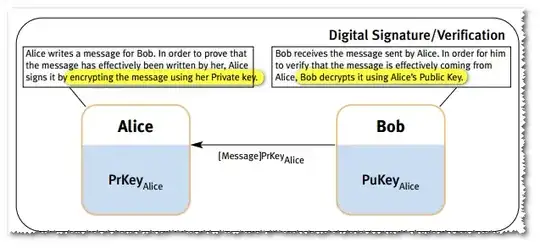That's the usual confusion of "signing is like encrypting with your private key".
Just forget it. It is a terrible explanation which does not work. It just seemed to work in days of yore, when the very first digital signature algorithm (based on asymmetric cryptography) was first described (I am talking about RSA and it was in the Disco era); but even for RSA it is not correct since it fails to take into account padding, which is critical for security.
Have a look at PKCS#1 to see how RSA is used. In particular, when encrypting data with RSA and a 1024-bit key, the most you can encrypt in one go is 117 bytes, but the encryption result is always 128 bytes, and that's what a decryption engine expects. Regardless of how much you try, 128 bytes will not fit in less than 117 bytes...
What must be remembered is that a private key is what is used to do something that should not be doable by everybody. This means data decryption (anybody can encrypt a message to Bob, but only Bob should bee able to read it) and signature generation (everybody can verify a signature, but only Bob should be able to produce a signature that everybody can verify as being from Bob).
Although there are asymmetric encryption algorithms which can use the same kind of key as digital signature algorithms (there is RSA encryption and there is RSA signatures, and both use "RSA keys"), using the same key for both is not a good idea.
